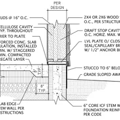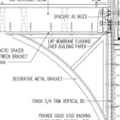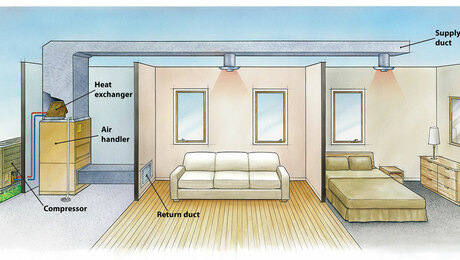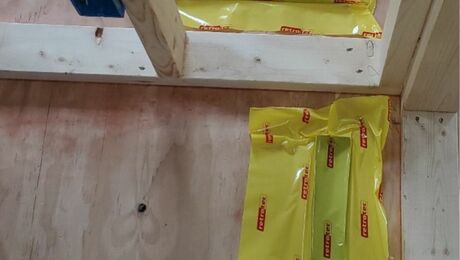Do basements have post-tension slabs?
Hi all – I’m confused by the juxtaposition of “slab” vs basement. And by the way “foundation” is often used in these parts to mean basement walls.
When you choose to have a basement in a new build, is the foundation slab built the same way as in a slab house. Do basements have post-tension slabs? If not, why not?
Thanks.
GBA Detail Library
A collection of one thousand construction details organized by climate and house part









Replies
"Slab" in residential construction simply means a concrete floor. Sometimes called flatwork, but that term includes sidewalks and other horizontal surfaces. The skills and tools needed to place flatwork are somewhat different from those needed to form and pour walls, though some contractors do both.
I try to use the term "basement slab" for a concrete floor poured below grade, between previously-poured foundation walls. And the term "slab on grade" when the slab is at the main level, with no basement or crawl space. "Raised slab" is a less-used term but it usually describes a slab more than code-minimum 6" above grade, placed on or between frost walls (short foundation walls) or grade beams (very short foundation walls).
I have never heard of a basement slab that is post-tensioned; they probably exist but are not common. Reinforcing is not required in basement slabs, though often something is added (rebar, welded wire mesh or micro-fibers made of plastic, glass or stainless steel) for crack control.
There are a many ways to build main-level slabs, which vary by region, project goals and the skills and imagination of the designer and/or builder.
One more terminology thing that comes up regularly: a proper slab, according to the IRC and most builders, is at least 3.5" thick. Sometimes in basements (or crawlspaces, which in most cases should be treated like short basements) we do a "rat slab" or "dust slab" which is a 2-3" concrete slab that covers and protects the vapor retarder but is likely to crack and is not well-finished.
Bluesolar,
To add to what Michael said: The big difference the two types of common slabs are those that are intermittently supported (suspended slabs) and those built on a compacted structural substrate (basement and slabs on grade).
Suspended slabs act like any other horizontal structural member (beams, joists) in that they are in compression on the top and tension on the bottom. Concrete, being poor in tension, needs the steel not to fail.
Slabs on grade, being supported by what they sit on, are reinforced primarily to stop cracking.
I've never heard of post-tensioned slabs being used outside the commercial context.
Bluesolar is looking at properties in the west, where expansive clay soils are common. Post-tensioned slab on grade construction is one of the more common methods for residential construction.
The need for post-tensioning is due to the soils under the slab swelling and shrinking seasonally, as the clay wets and dries with weather changes. The moisture content of the soils outside the foundations do influence the moisture content of the soils under the slab, and this can cause problems if the slab is not properly reinforced.
I suspect that the risk of this is significantly less for a basement floor slab, with the risk decreasing with the depth of the slab below grade level. As you go deeper, the soil moisture content will tend to be more constant over time. However, this could vary considerably locally, depending on the location of the water table, any porous layers below the house, etc.
Before you build, you should definitely hire a local geotechnical engineer to do a soil survey on your site and help design the foundations. If the slab requires any special reinforcement, the local engineer will let you know.
Peter,
Thanks for that rely. It's something I've never heard of.